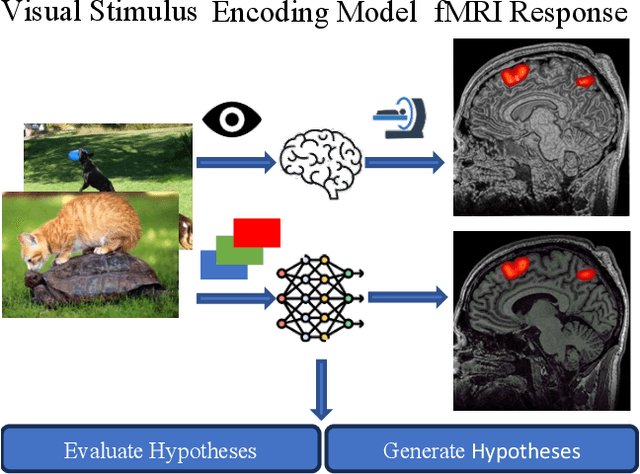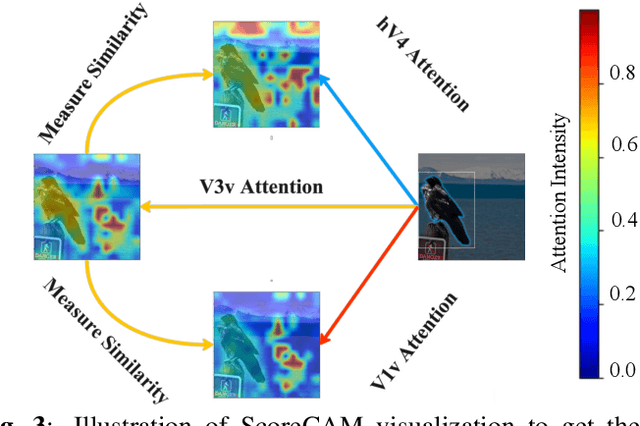Lai Wei
Ensuring Force Safety in Vision-Guided Robotic Manipulation via Implicit Tactile Calibration
Dec 13, 2024Abstract:In dynamic environments, robots often encounter constrained movement trajectories when manipulating objects with specific properties, such as doors. Therefore, applying the appropriate force is crucial to prevent damage to both the robots and the objects. However, current vision-guided robot state generation methods often falter in this regard, as they lack the integration of tactile perception. To tackle this issue, this paper introduces a novel state diffusion framework termed SafeDiff. It generates a prospective state sequence from the current robot state and visual context observation while incorporating real-time tactile feedback to refine the sequence. As far as we know, this is the first study specifically focused on ensuring force safety in robotic manipulation. It significantly enhances the rationality of state planning, and the safe action trajectory is derived from inverse dynamics based on this refined planning. In practice, unlike previous approaches that concatenate visual and tactile data to generate future robot state sequences, our method employs tactile data as a calibration signal to adjust the robot's state within the state space implicitly. Additionally, we've developed a large-scale simulation dataset called SafeDoorManip50k, offering extensive multimodal data to train and evaluate the proposed method. Extensive experiments show that our visual-tactile model substantially mitigates the risk of harmful forces in the door opening, across both simulated and real-world settings.
Contextual Bandits with Arm Request Costs and Delays
Oct 17, 2024

Abstract:We introduce a novel extension of the contextual bandit problem, where new sets of arms can be requested with stochastic time delays and associated costs. In this setting, the learner can select multiple arms from a decision set, with each selection taking one unit of time. The problem is framed as a special case of semi-Markov decision processes (SMDPs). The arm contexts, request times, and costs are assumed to follow an unknown distribution. We consider the regret of an online learning algorithm with respect to the optimal policy that achieves the maximum average reward. By leveraging the Bellman optimality equation, we design algorithms that can effectively select arms and determine the appropriate time to request new arms, thereby minimizing their regret. Under the realizability assumption, we analyze the proposed algorithms and demonstrate that their regret upper bounds align with established results in the contextual bandit literature. We validate the algorithms through experiments on simulated data and a movie recommendation dataset, showing that their performance is consistent with theoretical analyses.
MC-CoT: A Modular Collaborative CoT Framework for Zero-shot Medical-VQA with LLM and MLLM Integration
Oct 06, 2024



Abstract:In recent advancements, multimodal large language models (MLLMs) have been fine-tuned on specific medical image datasets to address medical visual question answering (Med-VQA) tasks. However, this common approach of task-specific fine-tuning is costly and necessitates separate models for each downstream task, limiting the exploration of zero-shot capabilities. In this paper, we introduce MC-CoT, a modular cross-modal collaboration Chain-of-Thought (CoT) framework designed to enhance the zero-shot performance of MLLMs in Med-VQA by leveraging large language models (LLMs). MC-CoT improves reasoning and information extraction by integrating medical knowledge and task-specific guidance, where LLM provides various complex medical reasoning chains and MLLM provides various observations of medical images based on instructions of the LLM. Our experiments on datasets such as SLAKE, VQA-RAD, and PATH-VQA show that MC-CoT surpasses standalone MLLMs and various multimodality CoT frameworks in recall rate and accuracy. These findings highlight the importance of incorporating background information and detailed guidance in addressing complex zero-shot Med-VQA tasks.
Prototype of Secure Wire-Line Telephone
Aug 24, 2024Abstract:This paper proposes a secure wire-line telephone prototype that leverages physical layer security (PLS) techniques to protect communications from wiretapping. The system generates artificial noise (AN) in both directions over a telephone line and utilizes a telephone hybrid circuit to achieve effective AN cancellation. We conduct a thorough analysis of the secrecy capacity and evaluate the system's performance through both simulations and practical experiments. The results demonstrate that the proposed scheme significantly enhances communication security while preserving the integrity of legitimate signals, making it a robust and viable solution for secure telephone systems.
Can I understand what I create? Self-Knowledge Evaluation of Large Language Models
Jun 10, 2024Abstract:Large language models (LLMs) have achieved remarkable progress in linguistic tasks, necessitating robust evaluation frameworks to understand their capabilities and limitations. Inspired by Feynman's principle of understanding through creation, we introduce a self-knowledge evaluation framework that is easy to implement, evaluating models on their ability to comprehend and respond to self-generated questions. Our findings, based on testing multiple models across diverse tasks, reveal significant gaps in the model's self-knowledge ability. Further analysis indicates these gaps may be due to misalignment with human attention mechanisms. Additionally, fine-tuning on self-generated math task may enhance the model's math performance, highlighting the potential of the framework for efficient and insightful model evaluation and may also contribute to the improvement of LLMs.
Adaptive Online Experimental Design for Causal Discovery
May 19, 2024Abstract:Causal discovery aims to uncover cause-and-effect relationships encoded in causal graphs by leveraging observational, interventional data, or their combination. The majority of existing causal discovery methods are developed assuming infinite interventional data. We focus on data interventional efficiency and formalize causal discovery from the perspective of online learning, inspired by pure exploration in bandit problems. A graph separating system, consisting of interventions that cut every edge of the graph at least once, is sufficient for learning causal graphs when infinite interventional data is available, even in the worst case. We propose a track-and-stop causal discovery algorithm that adaptively selects interventions from the graph separating system via allocation matching and learns the causal graph based on sampling history. Given any desired confidence value, the algorithm determines a termination condition and runs until it is met. We analyze the algorithm to establish a problem-dependent upper bound on the expected number of required interventional samples. Our proposed algorithm outperforms existing methods in simulations across various randomly generated causal graphs. It achieves higher accuracy, measured by the structural hamming distance (SHD) between the learned causal graph and the ground truth, with significantly fewer samples.
AlphaCrystal-II: Distance matrix based crystal structure prediction using deep learning
Apr 07, 2024Abstract:Computational prediction of stable crystal structures has a profound impact on the large-scale discovery of novel functional materials. However, predicting the crystal structure solely from a material's composition or formula is a promising yet challenging task, as traditional ab initio crystal structure prediction (CSP) methods rely on time-consuming global searches and first-principles free energy calculations. Inspired by the recent success of deep learning approaches in protein structure prediction, which utilize pairwise amino acid interactions to describe 3D structures, we present AlphaCrystal-II, a novel knowledge-based solution that exploits the abundant inter-atomic interaction patterns found in existing known crystal structures. AlphaCrystal-II predicts the atomic distance matrix of a target crystal material and employs this matrix to reconstruct its 3D crystal structure. By leveraging the wealth of inter-atomic relationships of known crystal structures, our approach demonstrates remarkable effectiveness and reliability in structure prediction through comprehensive experiments. This work highlights the potential of data-driven methods in accelerating the discovery and design of new materials with tailored properties.
Large Language Model Evaluation via Matrix Entropy
Jan 30, 2024Abstract:Large language models (LLMs) have revolutionized the field of natural language processing, extending their strong capabilities into multi-modal domains. Thus, it is vital to define proper and diversified metrics for the evaluation of LLMs. In this paper, we introduce matrix entropy, a novel metric rooted in information theory and geometry principles to quantify the data compression proficiency in LLMs. It reflects the model's ability to extract relevant information and eliminate unnecessary elements, thereby providing insight into the language model's intrinsic capability. Specifically, we demonstrate its applicability in both single-modal (language) and multi-modal settings. For language models, our findings reveal that the matrix entropy of representations follows a scaling law type reduction when the model scales up, serving as a complement to the traditional loss scaling law. For the multi-modal setting, we also propose an evaluation method based on matrix entropy for assessing alignment quality and we find that modern large multi-modal models exhibit great alignment performance.
Unidirectional brain-computer interface: Artificial neural network encoding natural images to fMRI response in the visual cortex
Sep 26, 2023



Abstract:While significant advancements in artificial intelligence (AI) have catalyzed progress across various domains, its full potential in understanding visual perception remains underexplored. We propose an artificial neural network dubbed VISION, an acronym for "Visual Interface System for Imaging Output of Neural activity," to mimic the human brain and show how it can foster neuroscientific inquiries. Using visual and contextual inputs, this multimodal model predicts the brain's functional magnetic resonance imaging (fMRI) scan response to natural images. VISION successfully predicts human hemodynamic responses as fMRI voxel values to visual inputs with an accuracy exceeding state-of-the-art performance by 45%. We further probe the trained networks to reveal representational biases in different visual areas, generate experimentally testable hypotheses, and formulate an interpretable metric to associate these hypotheses with cortical functions. With both a model and evaluation metric, the cost and time burdens associated with designing and implementing functional analysis on the visual cortex could be reduced. Our work suggests that the evolution of computational models may shed light on our fundamental understanding of the visual cortex and provide a viable approach toward reliable brain-machine interfaces.
Crystal structure prediction using neural network potential and age-fitness Pareto genetic algorithm
Sep 13, 2023Abstract:While crystal structure prediction (CSP) remains a longstanding challenge, we introduce ParetoCSP, a novel algorithm for CSP, which combines a multi-objective genetic algorithm (MOGA) with a neural network inter-atomic potential (IAP) model to find energetically optimal crystal structures given chemical compositions. We enhance the NSGA-III algorithm by incorporating the genotypic age as an independent optimization criterion and employ the M3GNet universal IAP to guide the GA search. Compared to GN-OA, a state-of-the-art neural potential based CSP algorithm, ParetoCSP demonstrated significantly better predictive capabilities, outperforming by a factor of $2.562$ across $55$ diverse benchmark structures, as evaluated by seven performance metrics. Trajectory analysis of the traversed structures of all algorithms shows that ParetoCSP generated more valid structures than other algorithms, which helped guide the GA to search more effectively for the optimal structures
 Add to Chrome
Add to Chrome Add to Firefox
Add to Firefox Add to Edge
Add to Edge